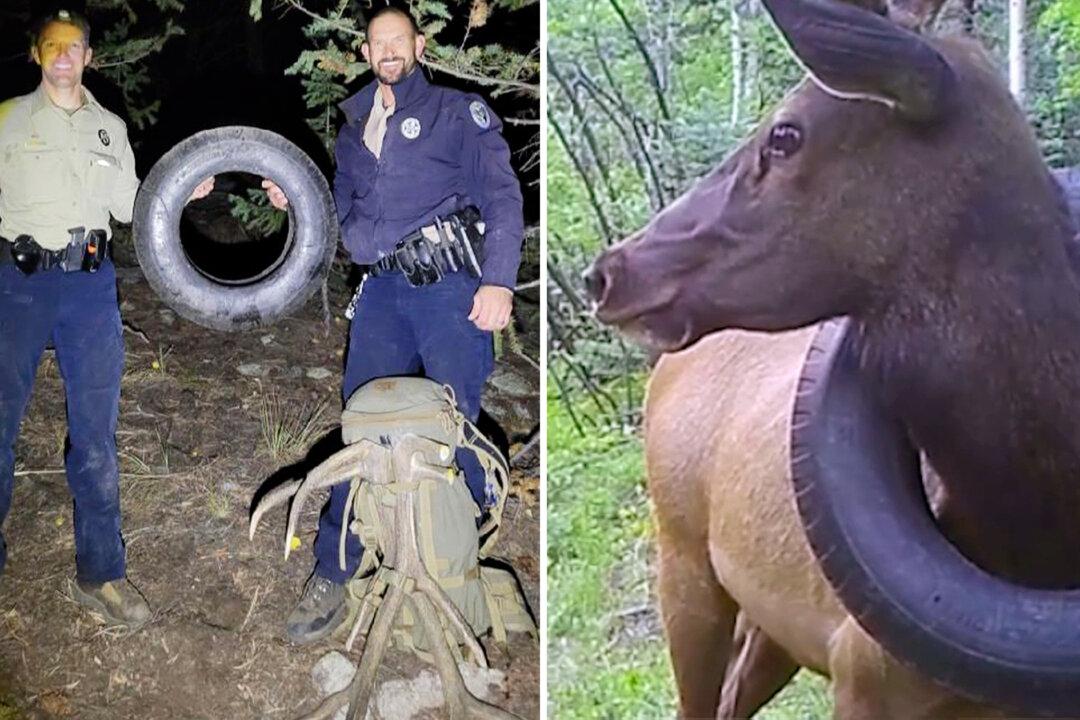Colorado Wildlife officers successfully removed a tire from around the neck of a 600-pound male elk last month. The 4-year-old bull had been wearing the 20-pound tire for the last two years, first being sighted in July 2019.
Colorado Parks and Wildlife officers had made several attempts to track him down to remove the cumbersome tire, finally succeeding when the elk was reported in a neighborhood near Pine Junction last October.






